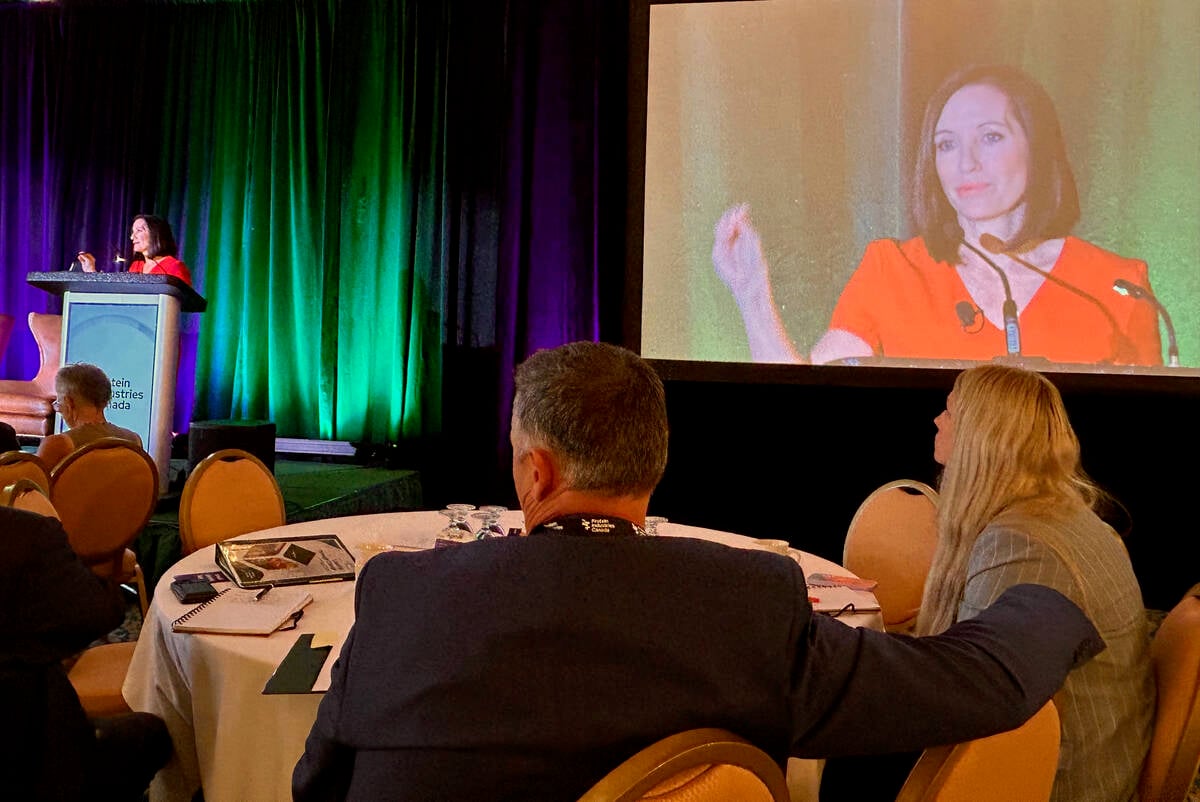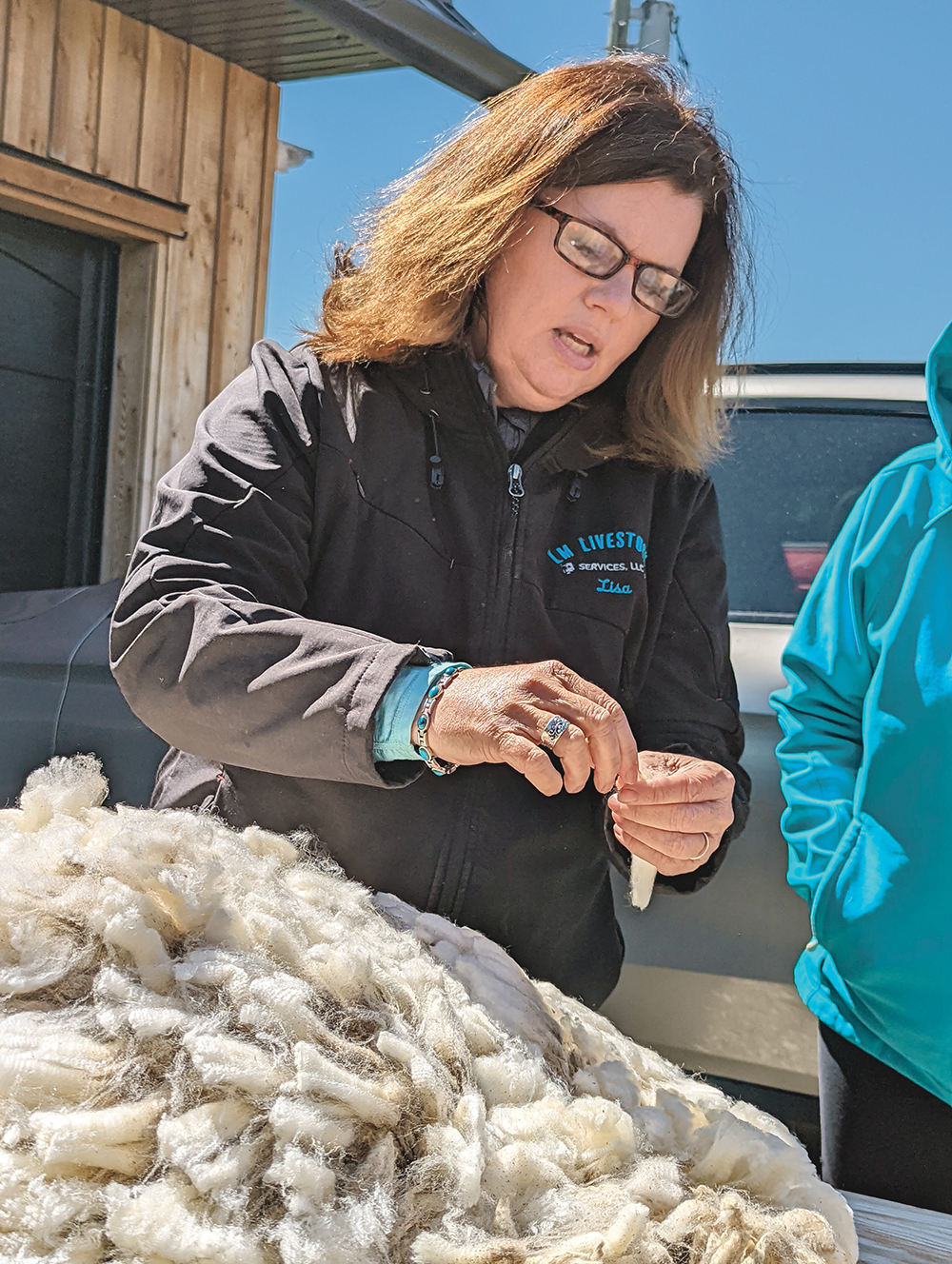“Blue paint is the worst,” says Lisa Surber from the front of a makeshift classroom. She’s pointing at a slide where a smudge of white fleece is smeared with the remains of blue marking paint, now greenish after a prolonged wash.
“The packaging may say it’s scourable but the second you cut that paint or thin it, it’s not scourable anymore. Now it’s permanent — and blue just seems to be the hardest to get out.”
Various fibresheds — groups that promote fibre use — and the national Campaign for Wool are part of a growing movement to raise wool’s profile. From hobby to commercial products, wool’s potential is being reconsidered.
Read Also

Canada told trade crisis solutions in its hands
Canadians and Canadian exporters need to accept that the old rules of trade are over, and open access to the U.S. market may also be over, says the chief financial correspondent for CTV News.
Surber is a wool grader with years of experience sorting, grading, buying and selling fleece throughout North America. Every year she spends many weeks traveling Canada and the United States to deliver workshops like one held recently near Cochrane, Alta.
“You’ve had it drilled into your head that the Canadian wool clip isn’t worth anything,” said Surber. “I know that with some basic skills, producers can do a lot to improve the quality of their wool clip.”
Wool is Alexandra Martin’s world as well. The owner and operator at Rosebud River Fibre Mill is on the front lines of the industry in Western Canada.
“To come to the workshop for the discussion and to hear ideas from colleagues involved with wool and sheep in Alberta was really inspiring and worthwhile,” she said.
Brittany Walker, chair of Alberta Lamb Producers, agreed.
“It’s a big learning curve. Cleanliness of the wool is so important and many producers don’t think about it too much because it doesn’t have much value right now.”
Many in the sheep industry want to change that lack of value.
“We need more and improved wool education for both producers and fibre enthusiasts,” said Surber. “It’s a bit of a chicken-and-egg thing. Producers think ‘if I do a better job on wool prep, I’ll get a premium.’ On the flip side, ‘if I get a premium, I’ll do a better job.’”

Martin agreed that giving producers the tools to do more with their wool is a good start but education must reflect the sheep industry’s realities.
“Producers’ main income is from lamb sales, not wool. Trends in lamb production — breeds and year-round lambing — must be taken into account.”
Walker said many new producers see value in wool.
“A lot of them say they’ve done their research and they want value out of everything — good wool and good carcass.”
As the two-day workshop went on, product ideas bounced around the room like wool dryer balls. British Columbia shepherd Jenn Bowes knows there is money to be made in wool.
“For our farm, wool is definitely profitable,” she said, noting fibre from her mixed flock of Gotland, Clun, Finn and Bluefaced Leicester sheep is popular with hand spinners and artisans.
“I can’t keep Bluefaced yarn or fleece. It just flies out the door.”
From feeding to the shearing floor to the mill, Surber gives pointed advice.
“Poor management of shearing day can devalue a clip in a matter of minutes,” she said.
From contaminants to rogue black fibre, Surber is adamant that producers determine how much profit comes off the backs of their sheep, regardless of breed.
“Contaminants affect every single part of processing, slowing everything down at the mill.”
Surber showed a slide of a mass of fleece, flecked with straw, feces, stains and tiny strands of bale netting.
“The vast majority of this is stuff that management can take out. As a producer, it costs you money.”
Then there’s the future to consider.
“It’s getting more and more difficult for young people to come back to the farm and make a living without adding another enterprise,” said Surber. “Why not sheep?”
Walker sees opportunities.
“I think wool is coming back,” she said. “The opportunity is with newer producers. Margins are tight — you have to make every potential product count.”

















